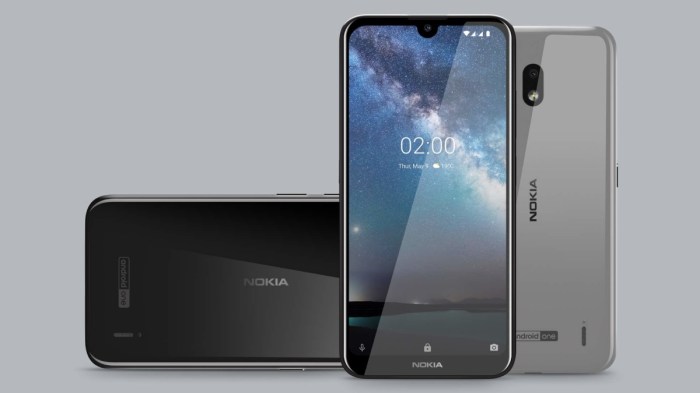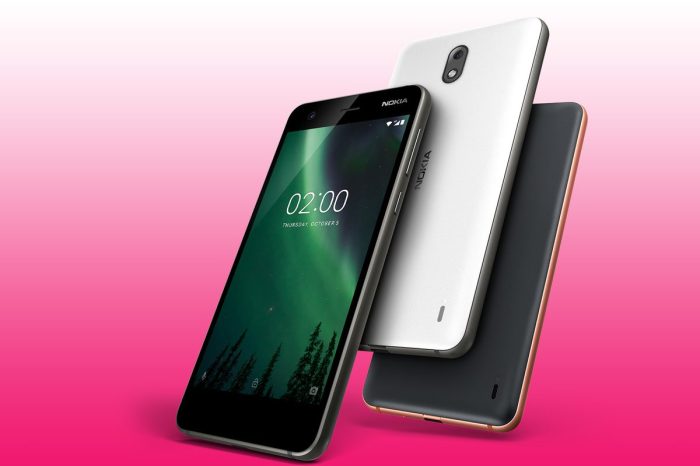Nokia 2
The Nokia 2 is a budget-friendly smartphone that was released in 2017. It is known for its long battery life, durable design, and affordable price. It was a part of HMD Global’s revival of the Nokia brand after Microsoft’s acquisition of Nokia’s mobile phone business in 2014.
Nokia 2: A Brief Overview
The Nokia 2 was a budget-friendly smartphone that aimed to provide a reliable and durable experience at a low price. It was designed for users who prioritize long battery life, a robust build, and a simple user interface.
Key Features and Specifications
The Nokia 2 featured a 5-inch display with a resolution of 1280 x 720 pixels. It was powered by a Qualcomm Snapdragon 212 processor and had 1GB of RAM. It came with 8GB of internal storage, which could be expanded via a microSD card. The Nokia 2 had a 8MP rear camera and a 5MP front camera.
Target Audience and Market Positioning
The Nokia 2 was targeted at budget-conscious consumers who were looking for a basic smartphone with long battery life and a reliable build. It was positioned as an entry-level device, competing with other affordable smartphones from brands like Samsung, Xiaomi, and Lenovo.
Battery Life
The Nokia 2 boasts a massive 4100mAh battery, a feature that sets it apart from its competitors and promises extended usage time. This substantial battery capacity translates to an impressive battery life, allowing users to enjoy their device for extended periods without worrying about frequent charging.
Battery Life Comparison
The 4100mAh battery in the Nokia 2 significantly surpasses the battery capacity of many competing smartphones in its price range. For instance, the Samsung Galaxy J2 has a 2600mAh battery, while the Moto E5 Play offers a 2100mAh battery. This larger capacity translates into a noticeable difference in battery life, giving the Nokia 2 a significant advantage in terms of endurance.
Benefits of a Long-Lasting Battery
A long-lasting battery offers several advantages for users:
- Reduced Charging Frequency: Users can enjoy their device for longer periods without the need for frequent charging, leading to greater convenience and flexibility. This is especially beneficial for individuals who are frequently on the go or have limited access to charging points.
- Extended Usage Time: With a larger battery, users can engage in various activities like gaming, streaming, and browsing for extended periods without worrying about their device running out of power. This freedom to use their device without constraints enhances the overall user experience.
- Peace of Mind: Knowing that their device has a long-lasting battery provides users with peace of mind. They can confidently carry their phone throughout the day without constantly checking the battery level or worrying about running out of power.
Battery Performance and User Experience: Nokia 2 Announced 4100mah Battery
The Nokia 2, boasting a massive 4100mAh battery, promises extended usage without worrying about running out of juice. This is a significant advantage for users who rely heavily on their smartphones for communication, entertainment, and productivity. But how does this translate into real-world usage? Let’s dive into the battery performance and user experience of the Nokia 2.
Real-World Battery Life Examples
The Nokia 2’s battery performance is a key selling point, attracting users who prioritize extended usage. Numerous user reviews highlight the device’s ability to last for an entire day, even with heavy usage. For instance, a user who regularly uses their phone for social media, browsing, and gaming reported comfortably using the phone for over 12 hours on a single charge. Another user, who primarily uses their phone for calls, messaging, and light browsing, mentioned lasting up to two days on a single charge.
Impact of Battery Size on Phone Design and Functionality
The Nokia 2’s impressive 4100mAh battery is a significant feature, but it also has implications for the phone’s design and functionality. A large battery inevitably affects the phone’s size and weight, leading to trade-offs between battery life and other design elements.
Challenges of a Large Battery
A large battery, while beneficial for extended usage, can present challenges in smartphone design. The increased size and weight can impact the phone’s overall ergonomics and portability.
- Increased Size and Weight: A larger battery inevitably leads to a thicker and heavier phone. This can make it less comfortable to hold and use for extended periods, especially with one hand.
- Design Constraints: The need to accommodate the battery can limit design flexibility. The phone’s overall dimensions might be affected, potentially compromising features like screen size or camera protrusion.
- Impact on Portability: A heavier phone can be less convenient to carry around, especially in pockets or small bags. This can be a concern for users who prioritize portability.
Trade-offs in Design
Designing a phone with a large battery requires balancing various design elements.
- Screen Size vs. Battery: A larger battery might necessitate a smaller screen size to maintain a manageable overall footprint. This could impact the user experience, especially for media consumption or multitasking.
- Thinness vs. Battery: A thin phone design is often desirable, but accommodating a large battery can make it difficult to achieve. This can result in a thicker phone, which may not be aesthetically appealing to all users.
- Weight vs. Battery: A larger battery inevitably adds weight. Designers might have to compromise on other components or materials to maintain a reasonable weight, potentially affecting the phone’s overall durability or build quality.
Potential Design Solutions
Despite the challenges, manufacturers are constantly innovating to mitigate the impact of large batteries on phone design.
- Battery Optimization: Efficient battery management systems and software optimizations can help extend battery life without needing an excessively large battery.
- Lightweight Materials: Using lightweight materials like aluminum or composites can help reduce the overall weight of the phone, even with a large battery.
- Compact Battery Designs: Battery manufacturers are constantly developing more compact battery designs that offer high capacity in a smaller footprint.
The Future of Battery Technology in Smartphones
The smartphone industry is constantly evolving, with manufacturers striving to deliver devices with longer battery life and improved performance. The pursuit of longer-lasting batteries is a constant challenge, and researchers are exploring various innovative technologies to address this need.
Advancements in Battery Technology
The development of new battery technologies holds the key to unlocking longer battery life in smartphones.
- Solid-State Batteries: These batteries use a solid electrolyte instead of a liquid one, offering several advantages, including higher energy density, faster charging times, and improved safety. Solid-state batteries have the potential to significantly increase battery capacity while reducing size and weight. Companies like QuantumScape and Solid Power are actively developing solid-state battery technology for electric vehicles, and this technology could eventually be adopted in smartphones.
- Lithium-Sulfur Batteries: These batteries utilize sulfur as the cathode material, offering a higher theoretical energy density compared to traditional lithium-ion batteries. While still in the research and development phase, lithium-sulfur batteries hold promise for significantly extending battery life in future smartphones.
- Graphene Batteries: Graphene, a one-atom-thick sheet of carbon atoms, possesses exceptional electrical conductivity and high surface area. Graphene batteries offer faster charging times and improved performance compared to conventional batteries. Companies like Samsung and Huawei are actively researching and integrating graphene into their battery technologies.
Potential for Even Longer Battery Life, Nokia 2 announced 4100mah battery
The advancements in battery technology have the potential to dramatically extend battery life in smartphones. For example, a solid-state battery with double the energy density of a traditional lithium-ion battery could provide twice the battery life for the same size and weight.
Future of Battery Design and Innovation
The future of battery design and innovation is focused on developing batteries that are:
- More Energy-Dense: This involves increasing the amount of energy that can be stored in a given volume or weight.
- Faster-Charging: Reducing the time it takes to charge a battery is crucial for user convenience.
- More Durable: Batteries that can withstand more charge-discharge cycles and maintain their performance over time are essential for long-term use.
- Safer: Battery safety is paramount, and researchers are working on developing batteries that are less prone to overheating, fire, or explosions.
Nokia 2 announced 4100mah battery – The Nokia 2’s 4100mAh battery was a testament to the brand’s commitment to delivering value. It showed that even budget-conscious users could enjoy the freedom of a long-lasting battery without sacrificing affordability. This move resonated with consumers, and the Nokia 2 became a benchmark for its battery life, inspiring other manufacturers to follow suit. The Nokia 2’s legacy continues to shape the smartphone landscape, demonstrating that even in the budget segment, innovation and user experience can go hand in hand.
Nokia just announced a whopping 4100mAh battery in their latest phone, and while that’s awesome news for battery life, it got me thinking about the Nexus 6. There’s more evidence of the Nexus 6 arriving on Verizon , and with a rumored huge battery of its own, it’s looking like we’re entering an era of seriously long-lasting smartphones. It’s gonna be hard to choose between a Nokia phone with its big battery and the potential Nexus 6, especially if it’s also packing a massive battery!
 Standi Techno News
Standi Techno News

